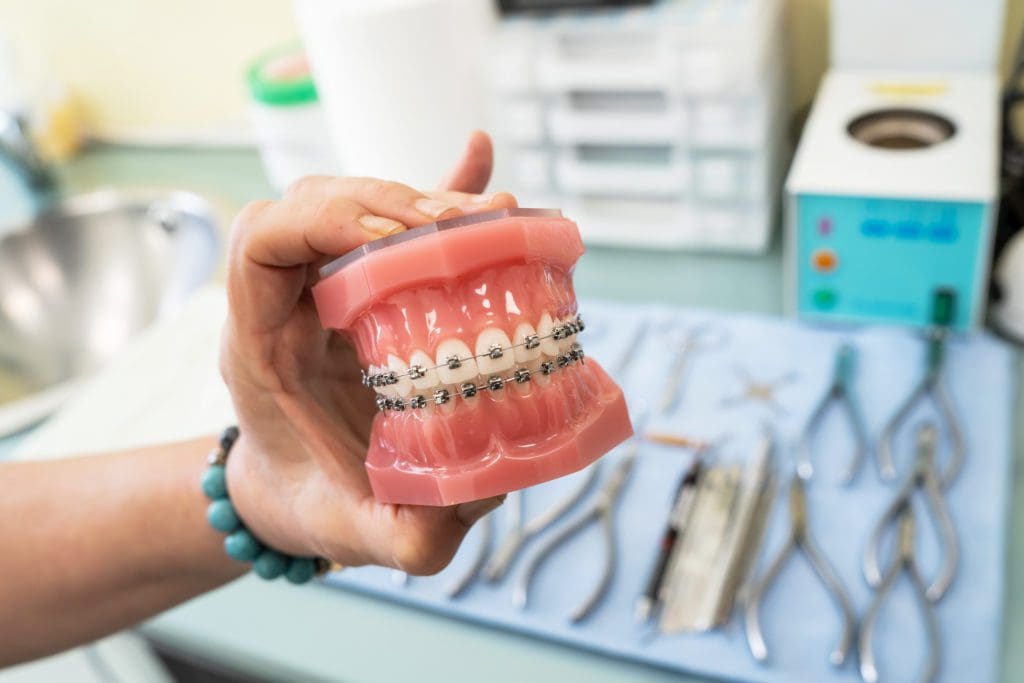How Cumming Orthodontics Can Transform Your Smile with Invisalign and Braces
How Cumming Orthodontics Can Transform Your Smile with Invisalign and Braces
Blog Article
Comprehensive Overview to Orthodontics Treatments for Correcting Dental Imbalances
In the world of orthodontics, the journey to attaining a perfectly lined up smile entails a myriad of procedures customized to deal with oral imbalances. From standard braces to unseen aligners and even medical alternatives, the area of orthodontics provides an array of remedies to deal with varying levels of dental irregularities. Comprehending the ins and outs of each treatment, including their mechanisms, advantages, and prospective downsides, is critical in making educated choices concerning one's orthodontic treatment. As we navigate via the comprehensive guide to orthodontic treatments for fixing oral imbalances, the elaborate information of each approach will certainly unfold, shedding light on the course toward a unified and useful oral alignment.
Orthodontic Procedures Review

In enhancement to clear aligners and typical dental braces, orthodontists may likewise suggest various other interventions like headgear, palatal expanders, or retainers to deal with certain placement issues (aligners). These procedures are tailored to each patient's distinct requirements and might include a mix of therapies to achieve the desired outcomes. Routine modifications and monitoring are vital parts of orthodontic treatment to make certain development gets on track and to make any required adjustments along the road. By undergoing orthodontic treatments, patients can not just attain a straighter grin but also improve their general oral health and function.
Traditional Dental Braces: Just How They Function
When thinking about orthodontic therapies for dental misalignments, conventional braces stand out as a tried and true technique for remedying teeth placing. Traditional dental braces consist of braces, wires, and bands that interact to use continuous stress on the teeth, progressively moving them into the wanted alignment. The brackets are connected to the teeth utilizing a special adhesive, and the cables are threaded through the brackets. By adjusting the stress of the cords, orthodontists can manage the direction and force related to each tooth, assisting them into proper positioning in time.
As stress is applied to the teeth through the braces, the bone surrounding the teeth is reshaped to sustain the brand-new tooth settings. Patients will need routine changes at the orthodontist's workplace to ensure the braces proceed to use the correct pressure for efficient teeth movement.
Unnoticeable Aligners: Disadvantages and pros
These clear, tailor-made trays are practically unseen when put on, making them an enticing alternative for individuals looking for an extra cosmetically pleasing orthodontic therapy. People can remove the aligners before eating or cleaning their teeth, decreasing the danger of food getting stuck in the appliance and streamlining the cleansing process.

Surgical Orthodontic Options
Surgical treatments in orthodontics existing viable alternatives for dealing with intricate dental imbalances that might not be properly fixed through conventional orthodontic therapies. While typical braces and unseen aligners can fix many orthodontic problems, certain instances call for medical intervention to accomplish optimum outcomes. Surgical orthodontic options are generally suggested for severe malocclusions, substantial jaw inconsistencies, and situations where the underlying bone framework needs adjustment to accomplish appropriate positioning.
One usual medical orthodontic treatment is orthognathic surgical treatment, which involves rearranging the jaws to fix functional issues such as problem speaking or chewing. This surgical treatment is often performed in cooperation with an orthodontist who assists line up the teeth before and after the treatment. Surgical orthodontics may likewise entail procedures to expose affected teeth, eliminate excess periodontal cells, or improve the jawbone to create a more unified facial profile.
Before taking into consideration medical orthodontic alternatives, individuals go through a comprehensive assessment to determine the need and prospective advantages of such treatments. cumming orthodontist. While surgical procedure might seem complicated, it can significantly improve both the function and aesthetic appeals of the smile in cases where conventional orthodontic therapies fail
Retainers and Post-Treatment Treatment

Failure to comply with post-treatment treatment guidelines can result in relapse, where the teeth slowly relocate back towards their original settings. Constant retainer wear, good oral health, and regular oral examinations are essential for maintaining the results achieved via orthodontic surgical procedure and guaranteeing the long-lasting security of the fixed dental positioning.
Final Thought
In conclusion, orthodontic procedures use different options for dealing with oral imbalances. Surgical orthodontic options are offered for more extreme misalignments. On the whole, orthodontic treatments can efficiently enhance oral health and wellness and aesthetic look.
As we browse with the detailed overview to orthodontic treatments for remedying oral imbalances, the intricate details of each method will unravel, dropping light on the course towards web a practical and unified dental positioning. - cumming orthodontics
One of the most usual orthodontic therapies is the use of braces, which consist of steel braces and cables that apply gentle stress to gradually change teeth right into the wanted placement.When considering orthodontic treatments for oral imbalances, typical dental braces stand out as a reliable method for dealing with teeth positioning. Additionally, unseen aligners might not be suitable for complicated orthodontic concerns that need even more considerable teeth movement, as they are commonly advised for mild to modest situations. Retainers are tailor-made orthodontic tools developed to hold teeth in their fixed positions after the completion of orthodontic therapy.
Report this page